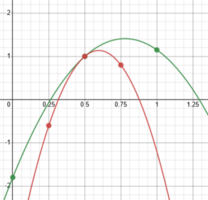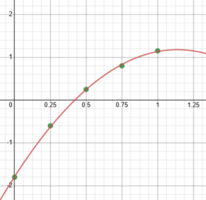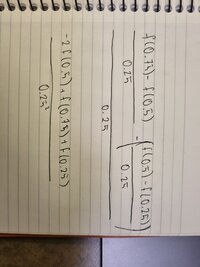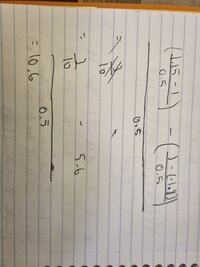View attachment 34602
I got it, thank you!
I was just confused because the mark-scheme used different techniques in finding the first and second derivatives.
Their formula is fairly standard; I had trouble finding a simple statement of it, but it is what Wikipedia shows in a general form
here. But you're right that it uses a different spread of points, in each case
doing the best that can be done with the given points, rather than being consistent from one derivative to the other in the deltas.
View attachment 34603
Wouldn't this also be a correct way of going about the question? You mentioned that this won't get us the same answer, why is that so? Even if it's a correct way to do it, it's not even close to the original answer so why is that?
Yes, this is what I did, in trying to do what you would be likely to do if you expected consistency. (Except that your answer should be
-10.6.) In a sense, it may be considered a more accurate estimate.
I explained the reason for the difference: the irregularity in the function, which causes the estimate to vary significantly with different deltas. Here I've fit parabolas to the three points used in "their" work (red, f" = -28.8), and to the three points used in "ours" (green, f" = -10.6):

(Yes, those numbers are the actual second derivatives of the two parabolas, and agree with the estimates.)
If the data had f(0.5) = 0.25, say, the results would have been more consistent, because the data would better fit a smooth curve (f" = -4.6):








